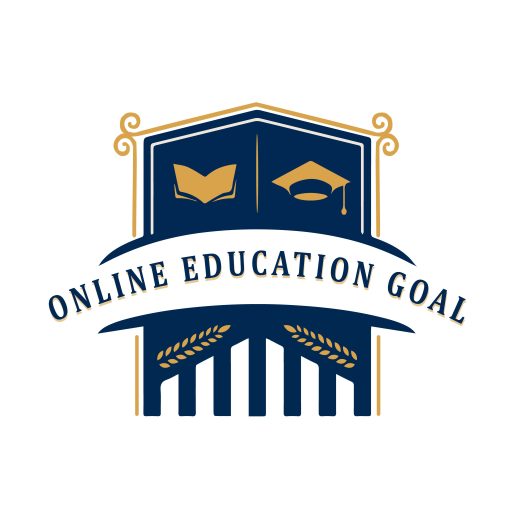Financing Higher Education for Better Strategies Unveiled
Financing higher education often involves a mix of scholarships, loans, and savings. Understanding your options can significantly ease the financial burden.
Embarking on higher education is a major investment in your future. As costs for colleges and universities continue to rise, navigating the financial aspect has become increasingly important. Students and families must make informed decisions about covering tuition fees, books, and living expenses.
Exploring financial aid provisions, such as grants, work-study programs, and student loans, is crucial. Many also turn to private funding sources, including scholarships from non-profit organizations, community groups, and corporate sponsors. Early planning and research into the myriad of financing options can lead to a manageable and successful educational funding strategy. This proactive approach enables students to focus more on their academic pursuits and less on the stress of financial constraints.
The Cost Of Knowledge
The path to higher education opens countless doors. Yet, the price of learning grows each year. Families across the world feel the weight of educating the next generation. Understanding the scale of this financial burden is crucial.
Rising Tuition Fees
College costs have soared over recent decades. It’s more than just numbers; students face real challenges. Each year, tuition hits a new peak.
- Public colleges cost more yearly.
- Private schools raise rates too.
- International students bear added costs.
| Year | Average Public College Tuition | Average Private College Tuition |
|---|---|---|
| 2020 | $10,560 | $37,650 |
| 2021 | $11,171 | $38,854 |
Grants and scholarships help, but many students need loans. These loans will take years to pay off.
Hidden Expenses
It’s not just about tuition. Other costs can surprise students and families. Books, housing, and meal plans add up quickly. Travel and personal expenses also play a part.
Let’s break down these unexpected costs:
- Books and supplies: Up to $1,200 annually.
- Housing: Dorms or apartments can reach $10,000 a year.
- Meal plans: On-campus dining might be $5,000 per year.
Working part-time helps some students. Others may seek grants focused on specific costs.

Assessing Financial Needs
Thinking of going to college? Awesome! Before the excitement kicks in, let’s talk money.
Understanding the financial side of higher education is a must. How much will it cost?
Can you or your family help pay? Don’t sweat it! Here’s how to figure out what you’ll need.
Estimating Total Cost
First off, know the full price tag. It isn’t just tuition. Books, housing, and food count too.
Travel and fun activities? Yep, those as well. Let’s break it down:
| Expense | Estimated Cost |
|---|---|
| Tuition & Fees | $X,XXX |
| Books & Supplies | $XXX |
| Housing & Meals | $X,XXX |
| Personal Expenses | $XXX |
| Transportation | $XXX |
| Miscellaneous | $XXX |
| Total | $XX,XXX |
Personal And Family Contributions
After the total cost is clear, see what you or your family can chip in.
Maybe you’ve got savings, or a part-time job. Will your parents help? Here’s a quick way to determine this part:
- Start with savings. Put a number on it.
- Next, income. Do you have a job?
- Think about gifts. Birthdays and holidays can help.
- Ask family. Will they support you?
Adding these up gives you a neat sum — that’s your contribution.
Now, subtract it from the total cost. This is what you still need to find.
Scholarship Smarts
Mastering the art of scholarships can turn dreams into degrees. ‘Scholarship Smarts’ is all about unlocking opportunities. It means knowing where to look, how to apply, and snagging that award. Let’s dive into the smart ways to ease financial stress through scholarships.
Hunting For Scholarships
Finding the right scholarships might feel like a treasure hunt. Yet, there’s method to the madness:
- Start early: Begin searching at least a year before college starts.
- Use online databases: Websites like Fastweb and Scholarships.com are goldmines.
- Check local listings: Look into community organizations, clubs, and businesses.
- Visit school counselors: They often have exclusive information on scholarships.
- Utilize libraries: Books and resource guides can reveal hidden gems.
Application Tips
Competition is fierce. Stand out with these application tips:
- Follow instructions: Missing a step could mean missing out.
- Be meticulous: Free from errors, applications should be neat and complete.
- Personalize essays: Share your story, passions, and why you deserve the scholarship.
- Meet deadlines: Submit applications well before due dates.
- Prepare for interviews: Practice common questions and exude confidence.
Remember, every scholarship you win is less debt down the road. Keep organized, remain persistent, and apply for as many as possible. Your future self will thank you.

Navigating Student Loans
Embarking on higher education is like setting sail on a vast ocean of opportunities. The water may be choppy with financial challenges, but navigating student loans can be your compass. With the right knowledge, you can steer towards a bright educational future without drifting into troubled monetary waters.
Understanding Types Of Loans
In the sea of financing options, knowing the types of loans available provides a map to treasure. Broadly, loans come in two currents – federal and private. Federal loans, offered by the government, often come with fixed interest rates and flexible repayment terms. Private loans, from banks or other lenders, typically offer variable rates and require a credit check.
| Loan Type | Source | Interest Rate | Credit Check |
|---|---|---|---|
| Federal | Government | Fixed | No |
| Private | Banks/Lenders | Variable | Yes |
Interest Rates And Repayment Plans
Interest rates dictate the cost of borrowing money. Federal loans often have lower rates than private ones. It’s important to grasp how these rates can affect your repayments. Fixed rates mean consistent payments, while variable rates can fluctuate with the market. Different loans come with different repayment plans. Some are based on your income, while others provide a structured schedule.
- Standard Repayment: Pay the same amount each month.
- Graduated Repayment: Payments start low, then increase over time.
- Income-Driven Repayment: Monthly payments tie to your earnings.
Work-study Programs
As college costs skyrocket, Work-Study Programs offer a practical solution. These programs allow students to work part-time while pursuing their degrees. This balances academics with work, providing invaluable work experience and financial relief.
How They Work
Work-Study Programs are financial aid that the government or schools provide. Eligible students gain part-time employment on or off-campus. Jobs relate to their course of study whenever possible. Students use earnings to cover education expenses. Federal Work-Study program funds these opportunities, making them steady and reliable.
- Application: Students fill out the FAFSA to apply.
- Eligibility: Need-based, determined by school and FAFSA results.
- Pay: At least federal minimum wage, but may be higher.
- Hours: Work hours adjust to class schedules.
- Roles: Vary from campus jobs to community service work.
Finding Opportunities
Locating a Work-Study job is a straightforward process. First, secure eligibility through your financial aid package. Next, explore job postings provided by your institution. Many schools offer online portals or job boards listing available Work-Study positions.
| Step | Action |
|---|---|
| 1 | Check financial aid status with the school’s aid office. |
| 2 | Access the school’s Work-Study job board or portal. |
| 3 | Review job descriptions matching your skills and interests. |
| 4 | Apply for positions following the school’s application guidelines. |
Remember, these programs are competitive, so get familiar with deadlines and apply early. Always keep your resume updated and reach out to career services for help with applications. With the right approach, Work-Study can make financing higher education less daunting.

Saving Early With 529 Plans
Saving early for higher education can seem daunting, but 529 Plans offer a straightforward path to fund educational expenses. Understanding these plans can make a significant difference in managing the costs of college and beyond.
Benefits
- Tax Advantages: Earnings grow tax-free and withdrawals for qualified education expenses are not taxed.
- Control: The account owner has full control over the funds and decisions surrounding the investment options.
- Flexibility: Funds can be used at a wide range of educational institutions for various expenses.
- Contribution Limits: These plans have high contribution limits, allowing for substantial savings.
- Gift Tax Benefits: Special gift tax exemptions apply to 529 Plan contributions, making them an effective estate planning tool.
Choosing The Right Plan
To select the best 529 Plan, consider these steps:
- Review state tax benefits.
- Analyze investment options for performance and fees.
- Consider the plan’s flexibility and features.
- Check the reputation and management of the plan provider.
- Consult with a financial advisor for tailored advice.
Financial Aid And Grants
Navigating through the maze of financing higher education can be daunting. Financial Aid and Grants shine as beacons of hope. They offer students the necessary support to chase their academic dreams without the burden of financial strain. Let’s explore two vital paths: applying for aid and discovering grant opportunities.
Applying For Aid
Embarking on your financial aid journey demands preparation and attention to detail. The initial step is completing the Free Application for Federal Student Aid (FAFSA). This form assesses your eligibility for different types of aid. Critical deadlines loom, so ensuring timely submission proves essential. Here’s a simplified breakdown:
- Gather Essential Documents: Have your Social Security number, tax records, and bank statements at hand.
- Visit the Official FAFSA Website: Use the official government site to avoid scams and ensure security.
- Follow Instructions Carefully: Read each question thoroughly and provide accurate information to avoid delays.
Remember, the early bird gets the worm. Submit your application as soon as possible to maximize your aid potential.
Grant Opportunities
Grants are gifts that fuel your educational journey without the need for repayment. The landscape is rich with options — from federal grants like the Pell Grant to state-funded programs and institutional awards. It’s important to dig deep and research extensively. A well-targeted grant application can pave the way to substantial financial relief.
| Type of Grant | Description | Eligibility |
|---|---|---|
| Federal Pell Grant | Need-based grants for undergraduates with financial need. | Fulfilled FAFSA, demonstrates financial need. |
| Federal Supplemental Educational Opportunity Grant (FSEOG) | Aid for undergraduates with exceptional financial need. | Enrolled in participating school, displays significant need. |
| State Grants | Varies by state, often need or merit-based. | Resident of the state, meets specific state criteria. |
| Institutional Grants | Grants offered by colleges themselves. | Varies by institution, often based on need, merit, or course of study. |
Scout local and school-based resources to uncover hidden grant gems. Maintain a proactive stance and apply early; competition for these awards is typically fierce.
Creative Funding Ideas
Thinking of higher education but worried about the costs? You’re not alone. Tuition fees and living expenses can be overwhelming. Yet, alternative routes exist beyond traditional loans and scholarships. Let’s unveil some creative funding ideas to spark your imagination.
Crowdfunding Education
Crowdfunding is a modern twist in education funding. It lets students raise money online. You share your story. Friends, family, and even strangers can contribute. Platforms like GoFundMe are popular choices.
- Set clear goals: Explain what the funds are for.
- Engage donors: Regular updates build trust.
- Offer thanks: Acknowledge every contribution.
Part-time Employment
Working part-time is a tried-and-true method. It covers costs while you learn. Plus, you gain valuable work experience. Jobs on or off campus are often flexible for students. Balance is key here.
| Job Type | Benefits |
|---|---|
| On-campus | Convenience, network opportunities |
| Off-campus | Higher pay, real-world experience |
Remember: Prioritize your studies. Look for jobs with flexible hours. Choose a role related to your field if possible. It’s about funding your dreams without sacrificing education quality.
Budgeting For Student Life
Welcome to the world of higher education! Here’s how you can manage your money and enjoy student life.
Managing Living Costs
Living as a student means watching your wallet. Create a monthly budget and stick to it. Here’s a simple plan:
- Track all expenses.
- Divide needs from wants.
- Include a savings category.
- Review and adjust as needed.
Remember, small savings add up over time.
Use our table for a clear budget overview:
Additional rows as needed
| Expense Type | Monthly Cost |
|---|---|
| Rent | $XXX |
| Food | $XXX |
| Utilities | $XXX |
Saving On Textbooks And Materials
Textbooks can drain your budget. But fear not! Money-saving tips are here.
- Buy used textbooks.
- Share with classmates.
- Rent books online.
- Use library reserves.
- Seek out digital versions.
Avoid buying new whenever possible. Explore all options and keep costs low!

Tax Credits And Deductions
Understanding tax credits and deductions can tremendously ease the financial burden of higher education. Both parents and students can save money when tax time arrives. Eligibility for certain tax breaks can lead to a significant reduction in the overall cost of college. It’s important to find out which benefits apply to your situation.
Leveraging Tax Benefits
Leveraging tax benefits requires knowing what’s available. The main options include the American Opportunity Tax Credit (AOTC) and the Lifetime Learning Credit (LLC). Additionally, tuition and fees deductions may apply. These benefits lower the amount of tax you owe, sometimes increasing your refund.
Qualifying For Credits
To qualify for credits, focus on the following criteria:
- Enrollment status must be at least part-time.
- You need to pursue a degree or certification.
- Expenses should relate to tuition and compulsory enrollment fees.
- Your Modified Adjusted Gross Income (MAGI) must fall below a certain threshold.
The AOTC allows for a maximum annual credit per student. The first four years of post-secondary education qualify. The LLC is less restrictive about enrollment level and duration but offers a lower credit. Unlike the AOTC, which is partially refundable, the LLC is non-refundable.
| Credit | Maximum Benefit | Education Level | Refundable? |
|---|---|---|---|
| American Opportunity Tax Credit | $2,500 per student | Undergraduate | Yes, partially |
| Lifetime Learning Credit | $2,000 per tax return | Undergraduate, Graduate, or Professional | No |
Education Beyond The Bachelor’s
Taking education to the next level often involves pursuing a graduate degree, such as a Master’s or PhD. This journey opens doors to advanced knowledge and greater career opportunities. Yet, the path to achieving these higher academic accolades can come with significant financial considerations. Let’s explore the options available to fund this adventure Educationally Beyond the Bachelor’s degree.
Funding Master’s And Phds
Graduate degrees come with costs that can seem daunting at first glance. Funding options for Master’s and PhD programs vary and may include loans, scholarships, and grants. Planning your finance strategy early is crucial to smoothly navigate this phase.
- Student Loans: Federal and private loans can fill funding gaps.
- Scholarships: Merit-based awards reduce debt significantly.
- Grants: Need-based funds that don’t require repayment.
- Employer Assistance: Work-study programs may offer tuition benefits.
- Research Programs: Some degrees offer paid research roles.
Fellowships And Assistantships
Present Fellowships and assistantships excellent opportunities for graduate students to support their education while gaining valuable experience.
| Fellowships | Assistantships |
|---|---|
|
|
Seek out fellowship programs within your field and assistantship roles that match your skills. Departments often list these opportunities on their websites. Networking with faculty can also reveal hidden prospects.
Real Stories, Real Strategies
Navigating the journey through higher education financing can feel like sailing in uncharted waters. Bursting with barriers, yet traversing this sea leads to lands of opportunity. Real experiences offer invaluable insights. Welcome to ‘Real Stories, Real Strategies’ where we spotlight individuals who made it to the shore. We unwrap their success tales and lessons to light the way for future voyagers.
Success Stories
Imagine a path lined with triumphs, where each step forward brings a sense of achievement. Let’s meet some navigators who found their way through the financial labyrinth of higher education.
- Alice: Landed a full scholarship with her community engagement.
- Raj: Balanced part-time work and studies, graduating debt-free.
- Mia: Crafted a winning essay, securing a coveted grant.
| Name | Strategy | Outcome |
|---|---|---|
| Alice | Scholarship through community service | Full tuition coverage |
| Raj | Work-study program | Graduated debt-free |
| Mia | Grant-winning essay | Significant financial support received |
Lessons Learned
Wisdom is the offspring of experience. Each successful story brings a lesson indispensable for academic adventurers.
- Start Early: Applicants who begin their search for funds ahead soar higher.
- Network Smartly: Connections open doors to unknown scholarships and resources.
- Every Penny Counts: Smaller scholarships can pile up to a mountain of aid.
Alice shares, “Engaging with my community not only shaped my character but also filled my college fund.” Raj reveals, “Managing time is crucial when juggling work and studies.” Mia advises, “Put your heart into your essays; it’s your story, make it heard.”
Frequently Asked Questions On Financing Higher Education
What Are The Best Options For Financing Higher Education?
Most students opt for federal student loans due to their lower interest rates and flexible repayment terms. Scholarships and grants are also ideal options since they do not require repayment. For additional funding, private loans or work-study programs could be considered.
How Can I Apply For Financial Aid For College?
Begin by filling out the Free Application for Federal Student Aid (FAFSA) to determine eligibility for federal aid. Additionally, research and apply for scholarships and consider your state’s grant programs. Always check deadlines and required documents for each application.
Is It Worth Taking Student Loans For Higher Education?
Taking student loans can be worthwhile if it leads to a degree that increases earning potential. However, it’s crucial to consider the loan amount, interest rates, and your future income to ensure that you can repay comfortably without financial strain.
What Are The Differences Between Federal And Private Student Loans?
Federal student loans offer fixed interest rates, income-driven repayment plans, and potential loan forgiveness. Private loans typically have variable rates and lack flexible repayment options. Federal loans do not require credit checks, while private loans often do.
Conclusion
Navigating the complexities of financing higher education is a journey worth taking. By exploring all available options, from scholarships to student loans, students can invest wisely in their futures. Start early, research thoroughly, and plan strategically to turn your academic goals into reality.
Embrace the power of a solid education; it promises to open doors to a world of opportunities.







